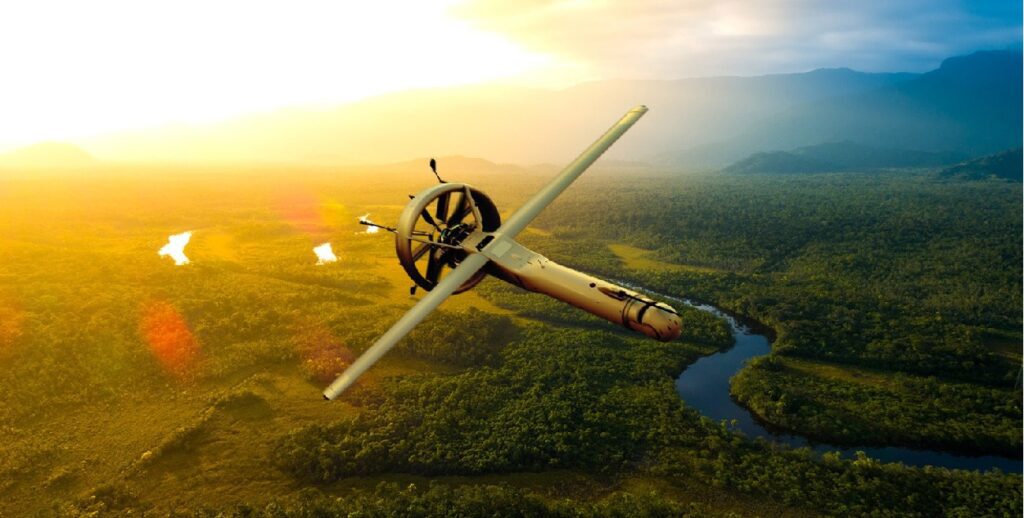Shield AI, a company based in San Diego, has developed the V-BAT drone, recently tested successfully in Ukraine. This advanced reconnaissance UAV can operate without GPS and communication signals, utilizing artificial intelligence and optical sensors to navigate and identify targets. During trials, the drone flew 100 km past the front line, locating and targeting Russian missile systems while relaying crucial information back to artillery units. Unlike standard kamikaze drones, the V-BAT boasts a range of 500 km, loitering over targets for up to 10 hours, making it a formidable asset against Russian electronic warfare tactics. Its design allows for easy transport and launch from various terrains, enhancing operational flexibility for Ukrainian forces.
According to a recent report by the Wall Street Journal, a new drone called the V-BAT, developed by the San Diego company Shield AI, has shown promising results during field tests in Ukraine. This drone is notable for its vertical takeoff and landing capabilities, allowing it to operate effectively even in environments where communication signals and GPS are disrupted. By utilizing advanced artificial intelligence and optical sensors, the V-BAT can maneuver and carry out reconnaissance missions despite challenging conditions.
During its trials, Ukrainian forces deployed the V-BAT from approximately 40 kilometers away from the front lines. It successfully flew 100 kilometers further into enemy territory, locating and targeting Russian surface-to-air missiles. This capability has significant implications for combat, as the V-BAT can gather crucial data and communicate it to artillery units, all while navigating sophisticated electronic warfare tactics.
Currently, Ukraine employs kamikaze drones that attempt to function without GPS by relying on inertial navigation, which can become less accurate over time. On the other hand, the V-BAT can maintain precise position tracking even in the event of GPS interference by employing image correlation techniques.
The V-BAT drone boasts an impressive range of 500 kilometers and can loiter over a target for up to 10 hours. This operational time contrasts sharply with the much shorter flight capabilities of currently used kamikaze drones. Not only is it powerful, but its size allows it to be transported in standard vehicles, making it versatile for deployment in various terrains, including ship-launch.
The V-BAT can also be operated in teams, with one operator capable of managing several drones autonomously. This enhances its effectiveness in GPS-denied environments by allowing them to share sensor information and create a unified operational picture.
The introduction of the V-BAT highlights the evolving landscape of drone warfare, emphasizing the importance of technology in modern battles. As the conflict in Ukraine continues, the ability to adapt and implement advanced drone systems could significantly shape military strategies on both sides.
Technical Features:
The V-BAT is powered by a Suter TOA 288 engine and can carry a payload of up to 11.3 kilograms. It features sophisticated EO and infrared cameras for high-resolution imaging in various lighting conditions.
Conclusion:
While the V-BAT presents new challenges for Russian forces, it is important to recognize that there is no single solution to the ongoing conflict. The drone’s capabilities contribute to Ukraine’s defense efforts but are unlikely to alter the war’s overall trajectory.
Tags: Ukraine, V-BAT Drone, Shield AI, Drone Warfare, Military Technology, Electronic Warfare
-
What does "Grinding Halt" mean in the context of the Russian offensive?
It means that the Russian military’s progress has slowed down or stopped because of various challenges, like strong resistance from Ukraine. -
What are V-BAT drones?
V-BAT drones are special aircraft supplied by the US that can fly themselves using artificial intelligence, which helps them perform missions without needing a pilot on board. -
How can US-supplied drones threaten Russian jammers?
These drones are designed to avoid or disrupt the equipment that Russia uses to block signals, which can help Ukraine maintain better communication and control. -
Why is the use of technology like V-BAT important?
Using advanced technology like V-BAT drones allows for more effective and precise military operations, which can help in countering challenges from the enemy. - What impact could the combination of V-BAT drones and Ukraine’s defenses have?
If the drones can successfully operate and bypass Russian jamming, it could give Ukraine a significant advantage, making it harder for Russia to coordinate their attacks.






